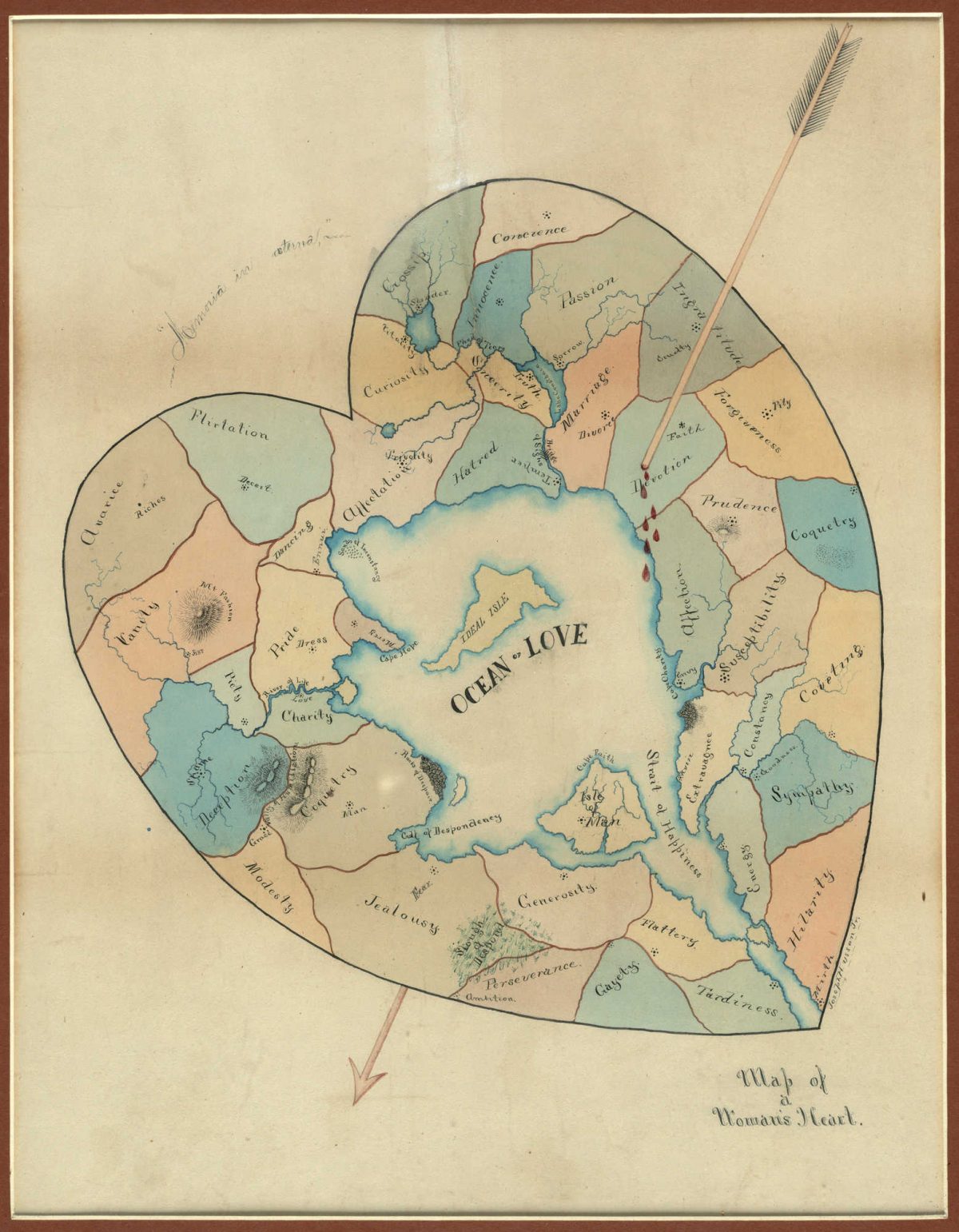Losing Time

There is no December 30, 2011, in the history of Samoa. The island nation requested that at the end of the year the international date line be redrawn to pass east of it rather than west, so that it could share the same time zone as Australia and New Zealand, now major trade partners. As a result, it jumped directly from December 29 to December 31.
Under the old arrangement, “In doing business with New Zealand and Australia, we’re losing out on two working days a week,” explained prime minister Tuilaepa Sailele Malielegaoi. “While it’s Friday here, it’s Saturday in New Zealand, and when we’re at church on Sunday, they’re already conducting business in Sydney and Brisbane.”
The move means Samoa can no longer promote itself as the last place on Earth to see each day’s sunset, but there’s a compensating bonus: Since nearby American Samoa remains on the eastern side of the line, “You can have two birthdays, two weddings, and two wedding anniversaries on the same date — on separate days — in less than an hour’s flight across [the ocean], without leaving the Samoan chain.”
Everything evens out cosmically anyway — Samoa had crossed the line in the other direction in 1892 to promote trade with the United States, and in that year it celebrated the occasion by marking the same day twice: July 4, America’s Independence Day.
Podcast Episode 172: An American in Feudal Japan

In 1848, five years before Japan opened its closed society to the West, a lone American in a whaleboat landed on the country’s northern shore, drawn only by a sense of mystery and a love of adventure. In this week’s episode of the Futility Closet podcast we’ll follow Ranald MacDonald as he travels the length of Japan toward a destiny that will transform the country.
We’ll also remember a Soviet hero and puzzle over some security-conscious neighbors.
Pleased to Meet You
Unusual personal names collected by onomasticist Elsdon C. Smith for his Treasury of Name Lore, 1967:
- Dr. Pacifico D. Quitiquit
- Lala Legattee Wiggins
- Stanley Toogood
- Effie Bowleg
- Polycarp Pridgen
- Merriweather Trivelpiece
- Aspidia Snitch
- Tabaca Blacksheep
- Iva Headache
- Marietta Avenue Jeeter
- Vaseline Malaria
- Soda Water
- Ten Million
- St. Elmo Bug
- Fice Mook
- Trammer W. Splown
- Gulley Cowsert
- Buckshot Magonicle
- Teemer Furr
- Sepnoress Gorce
- Heathcliff Heimerdinger
- Honeysuckle Ginsberg
- Ephraim Very Ott
- Gladys Whysoglad
- Park A. Carr
- Creekmore Fath
- May June July
- Melody Tunes
- Ann Ant
- Fairy Duck
- Vito d’Incognito
- Napoleon N. Waterloo
- Tressanela Noosepickle
- Osbel Irizarry
- Athelstan Spilhaus
- Weikko Tinklepaugh
- Twilladeen Hubkapiller
According to the Veterans Administration, Love’n Kisses Love is a deceased sailor formerly of Bremerton, Washington. Walt Disney employed an animator named T. Hee. Outerbridge Horsey VI was named ambassador to Czechoslovakia in 1963. (“I am the sixth Outerbridge Horsey and my unhappy son is the seventh. In fact, the only trouble with any new post is explaining the name to people.”) Gisella Werberzerck Piffl was a character actress in Australia in 1948. Two police officers who worked together in Long Beach, California, in 1953 were named Goforth and Ketchum. Jack Benny’s wife said that the firm Batten, Barton, Durstine & Osborn (now BBDO) “sounds like a trunk falling down stairs.”
And “When Mrs. Rum of Chicago divorced her husband she was allowed to resume her maiden name of Cork.”
See Local Color, Roll Call, Pink Labels, Roll Call, Roll Call, and Bent Handles.
The Hollow Nickel Case
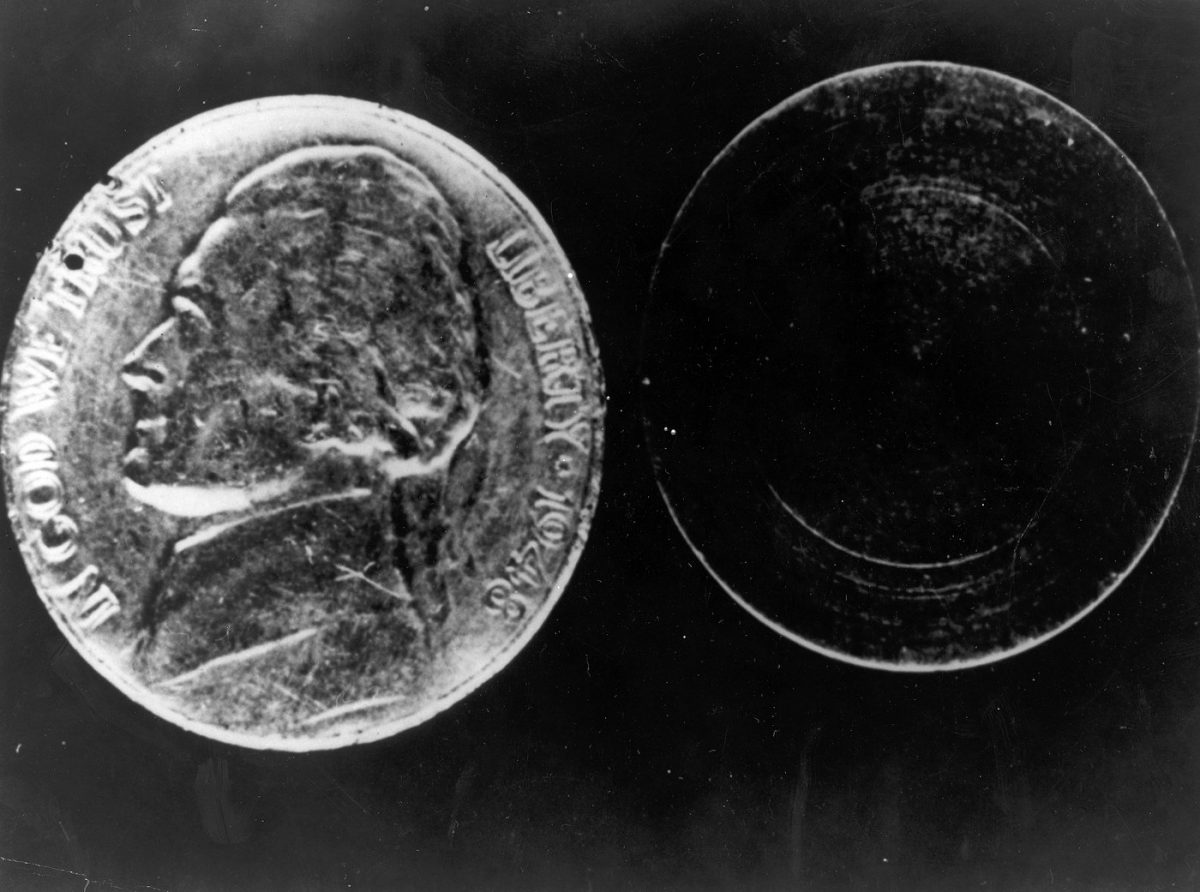
In June 1953, Brooklyn newsboy Jimmy Bozart was collecting in a Foster Avenue apartment building when someone paid him with a nickel that felt light. When he dropped it it popped open, revealing a piece of microfilm that bore a series of numbers (below).
The New York police gave it to the FBI, which spent four years trying to determine the origin of the nickel and the meaning of the numbers. Finally, in May 1957 defecting KGB agent Reino Häyhänen helped them crack the cipher. The message was a greeting from Moscow welcoming him to the United States:
- WE CONGRATULATE YOU ON A SAFE ARRIVAL. WE CONFIRM THE RECEIPT OF YOUR LETTER TO THE ADDRESS ‘V REPEAT V’ AND THE READING OF LETTER NUMBER 1.
- FOR ORGANIZATION OF COVER, WE GAVE INSTRUCTIONS TO TRANSMIT TO YOU THREE THOUSAND IN LOCAL (CURRENCY). CONSULT WITH US PRIOR TO INVESTING IT IN ANY KIND OF BUSINESS, ADVISING THE CHARACTER OF THIS BUSINESS.
- ACCORDING TO YOUR REQUEST, WE WILL TRANSMIT THE FORMULA FOR THE PREPARATION OF SOFT FILM AND NEWS SEPARATELY, TOGETHER WITH (YOUR) MOTHER’S LETTER.
- IT IS TOO EARLY TO SEND YOU THE GAMMAS. ENCIPHER SHORT LETTERS, BUT THE LONGER ONES MAKE WITH INSERTIONS. ALL THE DATA ABOUT YOURSELF, PLACE OF WORK, ADDRESS, ETC., MUST NOT BE TRANSMITTED IN ONE CIPHER MESSAGE. TRANSMIT INSERTIONS SEPARATELY.
- THE PACKAGE WAS DELIVERED TO YOUR WIFE PERSONALLY. EVERYTHING IS ALL RIGHT WITH THE FAMILY. WE WISH YOU SUCCESS. GREETINGS FROM THE COMRADES. NUMBER 1, 3RD OF DECEMBER.
With Häyhänen’s help the FBI were able to arrest Vilyam Genrikhovich Fisher, whose hotel room was full of espionage equipment. He was sentenced to a 30-year prison term in 1957 and exchanged for Francis Gary Powers in 1962.
Both the FBI and the CIA have articles about the case. It’s not immediately clear to me how the nickel found its way to the two ladies who’d given it to Jimmy. “Why, we’ve never seen a hollow coin,” they told the FBI, “or, for that matter, even heard of one before.”
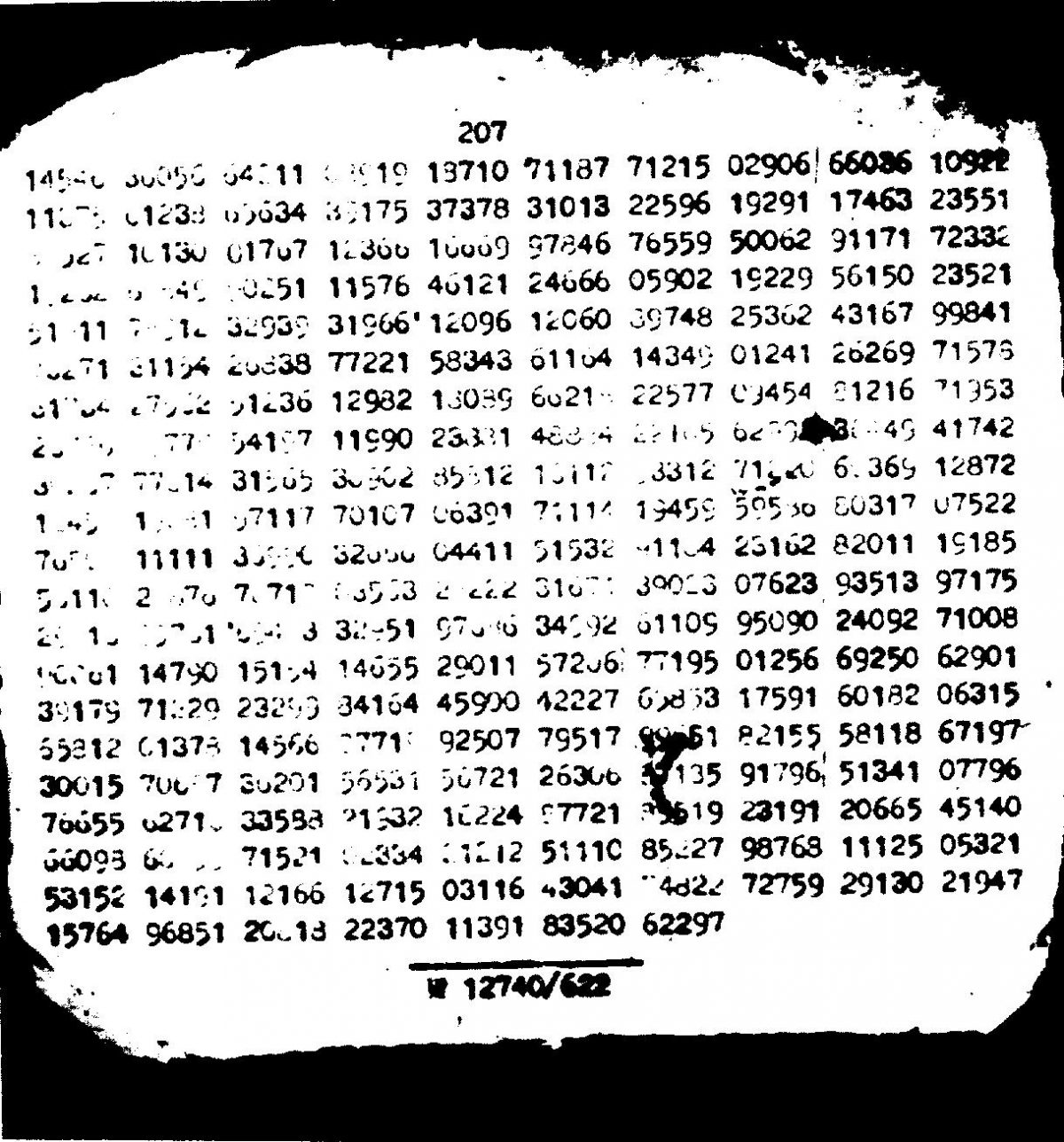
Math Notes
Amazingly, each of these denominators is the product of two distinct primes (discovered by A.W. Johnson in 1978).
Can a sum of such fractions produce any natural number? That’s conjectured — but so far unproven.
(Thanks, Sid.)
“Electric Bathing”
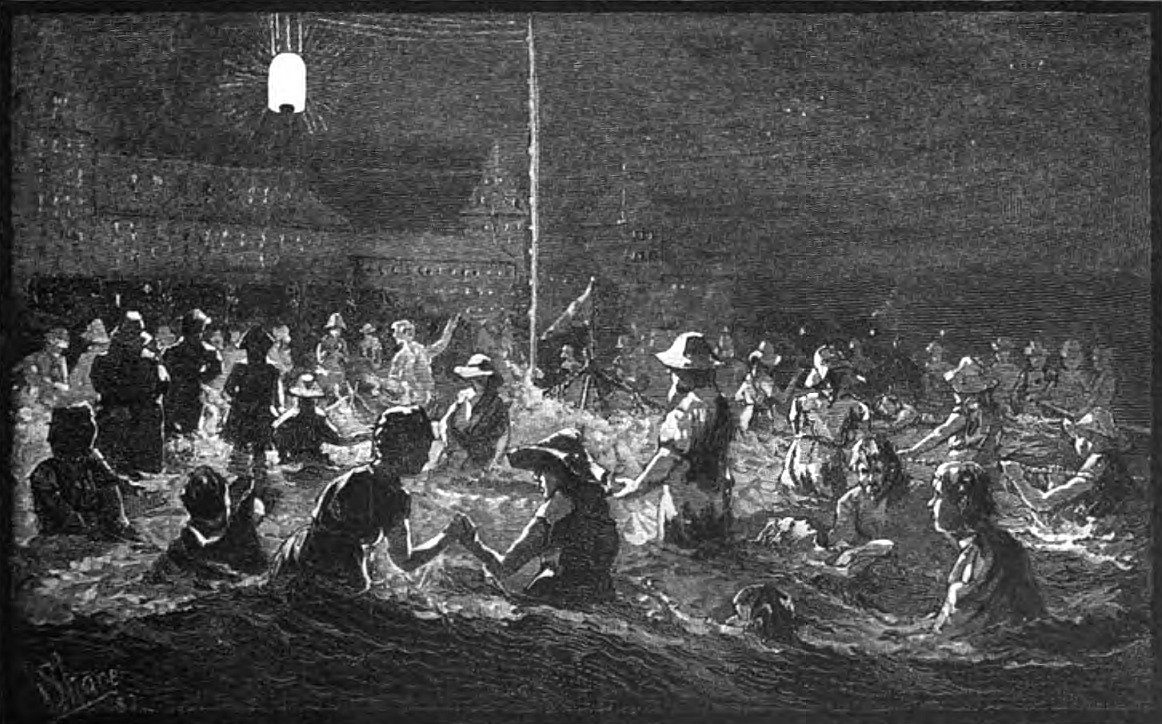
In 1878 Coney Island mounted electric lights on poles so that visitors could play in the surf at night.
“One could take many a long journey and never meet elsewhere with so strange, so truly weird a sight as this,” reported Scribner’s Monthly. “The concentrated illumination falls on the formidable breakers plunging in against the foot of the bridge, and gives them spots of sickly green translucence below and sheets of dazzlingly white foam above. There is a startling spot of foreground and nothing more. A couple who are confident swimmers, possibly a man and his wife, come down the bridge and put off into the cold flood. The woman holds by the man’s belt behind, and he disappears with her into the darkness. A circle disports with hobgoblin glee around a kind of May-pole in the water.”
“Nothing else,” opined the New York Times, “would answer the purpose of those lunatics who persist in bathing after nightfall.”
The Scenic Route
University of Toronto mathematician Ed Barbeau tells of a Montana student who was asked to find the cost of fencing the perimeter of a rectangular field 132 feet long and 99 feet wide, given that there are 16.5 feet in a rod and that one rod of fencing costs $12.75. The student first worked out five products:
165 × 4 = 660
165 × 7 = 1155
165 × 6 = 990
165 × 9 = 1485
165 × 8 = 1320
He crossed out all but the third and fifth of these and continued:
1275 × 6 = 7650
1275 × 8 = 10200
10200 + 7650 = 17850
17850 + 17850 = 35700
He gave 35700 as the answer. “Indeed the required cost is $357.”
(Ed Barbeau, “Fallacies, Flaws, and Flimflam,” College Mathematics Journal 37:4 [September 2006], 290-292.)
More Theatrical Codes
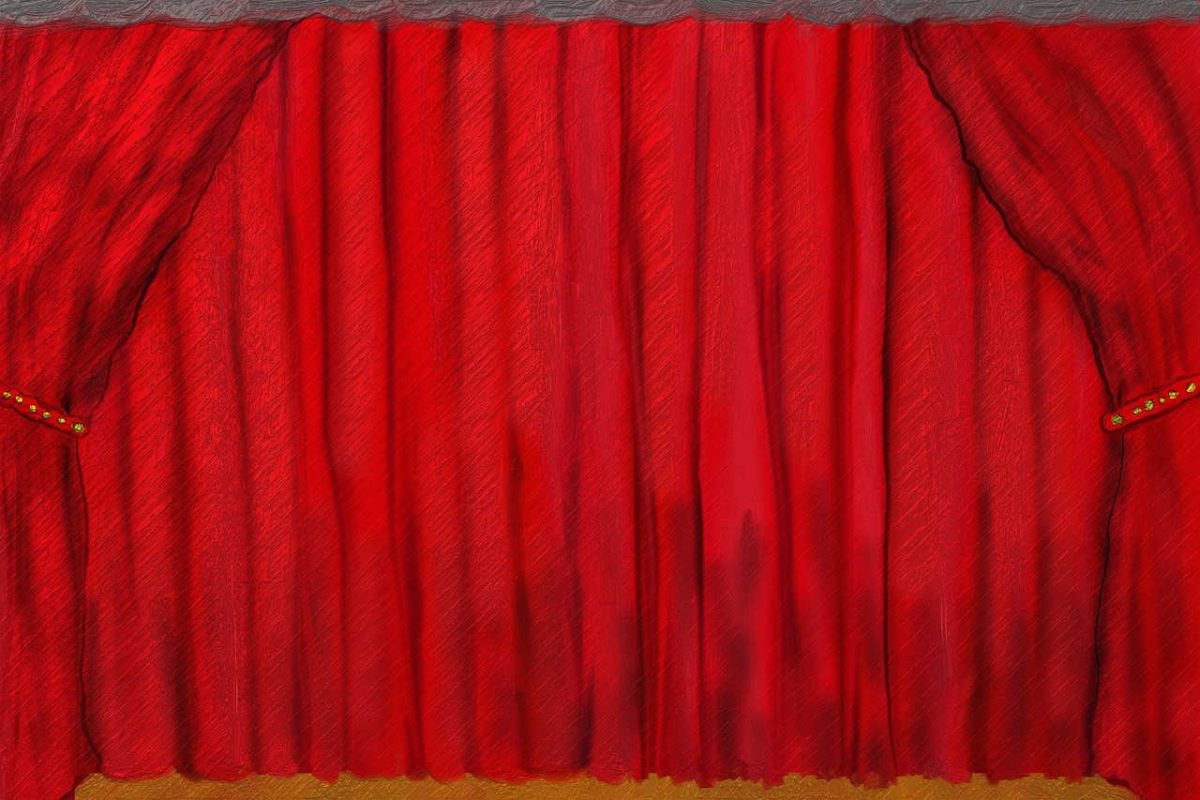
Last year I mentioned Sullivan & Considine’s Theatrical Cipher Code of 1905, a telegraphic code for “everyone connected in any way with the theatrical business.” The idea is that performers, managers, and exhibitors could save money on telegrams by replacing common phrases with short code words:
Filacer – An opera company
Filament – Are they willing to appear in tights
Filander – Are you willing to appear in tights
Filiation – Chorus girls who are shapely and good looking
Filibuster – Chorus girls who are shapely, good looking, and can sing
At the time I lamented that I had only one page. Well, a reader just sent me the whole book, and it is glorious:
Abbacom – Carry elaborate scenery and beautiful costumes
Abbalot – Fairly bristles with hits
Abditarum – This attraction will hurt our business
Addice – Why have not reported for rehearsal
Admorsal – If you do not admit at once will have to bring suit of attachment
Behag – Not the fault of play or people
Bordaglia – Do not advance him any money
Boskop – Understand our agent is drinking; if this is true wire at once
Bosom – Understand you are drinking
Bosphorum – Understand you are drinking and not capable to transact business
Bosser – We are up against it here
Bottle – You must sober up
Bouback – Your press notices are poor
Deskwork – A versatile and thoroughly experienced actress
Despair – Absolute sobriety at all times essential
Detour – Actress for emotional leads
Devilry – Actress with child preferred
Dextral – An actor with fine reputation and proven cleverness
Dishful – Comedian, Swedish dialect
Disorb – Do not want drunkards
Dispassion – Do you object to going on road
Distal – Good dresser(s) both on and off stage
Dormillon – Lady for piano
Drastic – Must be shapely and good looking
Druism – Not afraid of work
Eden – Strong heavy man
Election – What are their complexions
Epic – Does he impress you as being reliable and a hustler
Exclaimer – Are they bright, clever and healthy children
Eyestone – Can you recommend him as an experienced and competent electrician
Faro – A B♭ cornetist
Flippant – Must understand calcium lights
Fluid – Is right up-to-date and understands his business from A to Z
Forester – Acts that are not first class and as represented, will be closed after first performance
Foxhunt – Can deliver the goods
Gultab – The people will not stand for such high prices
Hilbert – State the very lowest salary for which she will work, by return wire
Jansenist – Fireproof theatre
Jinglers – How did the weather affect house
Jolly – Temperature is 15° above zero
There’s also an appendix for the vaudeville circuit:
Kajuit – Trick cottage
Kakour – Grotesque acrobats
Kalekut – Sparring and bag punching act
Kernwort – Troupe of dogs, cats and monkeys
Kluefock – Upside down cartoonist
Koegras – Imitator of birds, etc.
Letabor – Act is poorly staged and arranged
Litterat – The asbestos curtain has not arrived yet
Mallius – How many chairs do you need in the balcony
Meleto – Is the opposition putting on stronger shows than we
The single word “Lechuzo” stands for “Make special effort to mail your report on acts Monday night so as to enable us to determine your opinion of the same, as in many instances yours will be the first house that said act has performed in, and again by receiving your report early it enables us to correct in time any error that may be made regarding performer, salary and efficiency.”
(Thanks, Peter.)
Some Enchanted Evening
In 1993, reseachers Suzanna Rose and Irene Hanson Frieze asked 135 undergraduates to describe what had happened on their most recent first date:
| Women | Men |
| Groomed and dressed | Picked up date |
| Was nervous | Met parents/roommates |
| (Man:) Picked up date | Left |
| Introduced to parents, etc. | Picked up friends |
| (Man:) Courtly behavior (open doors) | Confirm plans |
| Left | Talked, joked, laughed |
| Confirm plans | Went to movies, show, party |
| Got to know & evaluate date | Ate |
| Talked, joked, laughed | Drank alcohol |
| Enjoyed date | Initiated sexual contact |
| Went to movies, show, party | Made out |
| Ate | Took date home |
| Drank alcohol | Asked for another date |
| Talked to friends | Kissed goodnight |
| Had something go wrong | Went home |
| (Man:) Took date home | |
| (Man:) Asked for another date | |
| (Man:) Told date will call her | |
| (Man:) Kissed date goodnight | |
| Went home |
Of the 20 actions reported by women, 6 were initiated by the man. Of the 15 actions reported by men, none were initiated by the woman.
Thirty-three respondents reported something going wrong. “[O]ne young man had car trouble after picking up his date and was mortified by having to take her back home. Another’s date abandoned her at a party and began to cruise other women, leaving the woman to fend for herself. Embarrassing events were also common. One participant reported having made a fool of herself by throwing the ball backward while bowling; another woman got extremely upset when her date insisted it was ‘love at first sight.'”
“A third type of interruption … was related to perceived violations of gender roles, such as ‘He lost points for not opening my car door’ and ‘We went out to eat later at Pizza Hut and she was a pig.'”
(Suzanna Rose and Irene Hanson Frieze, “Young Singles’ Contemporary Dating Scripts,” Sex Roles 28:9/10, 1993.)

